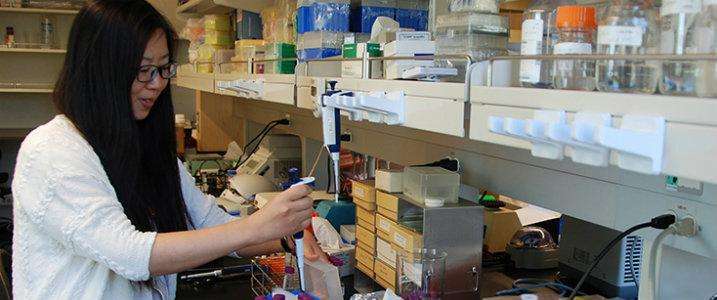Often the villain, fructose may play hero's role in muscular dystrophy treatment

A substance widely known as a villain for its role in causing obesity-related health problems has emerged as a possible hero in the fight against a debilitating genetic disorder.
Research suggests that fructose, a sugar found in honey, fruits and vegetables, makes a type of molecular treatment for Duchenne muscular dystrophy more effective.
Progressive muscle degeneration and weakness characterize Duchenne muscular dystrophy, which is caused by the absence of a protein, dystrophin, that helps keep muscles intact.
Symptoms usually appear around age 4, first affecting the shoulders, upper arms, hips and thighs. Patients have a hard time rising from the floor, climbing stairs, keeping their balance and raising their arms.
Ultimately, they require use of a wheelchair, and most die in their 30s when their cardiac and respiratory systems fail. Duchenne primarily affects males, and about one boy in 3,500 will be born with it.
Hong Moulton of the Oregon State University College of Veterinary Medicine was part of an international collaboration that looked at fructose's ability to enhance the uptake and activity of antisense oligonucleotides, or AOs. Therapy with those molecules has been shown to restore some production of dystrophin, but efficiently delivering the molecules to the muscle cells has been a challenge.
This research, which addressed the delivery challenge, involved dystrophin-deficient rodents known as mdx mice. Findings suggest that when fructose is administered along with a type of AO known as a phosphorodiamidate morpholino oligomer, or PMO, the AO gets into muscle cells four times better. This results in more production of dystrophin and better recovery of some muscle use. Fructose also enhanced delivery of a PMO conjugated to a cell-penetrating peptide, a molecule known as a PPMO.
"We don't yet understand the mechanism," Moulton said. "Maybe it's that the fructose is an energy source that enhances uptake, because uptake in muscle cells requires energy. But right now the mechanism is unknown."
Compared with other delivery technologies, fructose has low toxicity, making it both safe and efficient. No weight gain or any abnormal behavior was observed in the mice in the study.
The findings by Moulton, HaiFang Yin's research group at China's Tianjin Medical University and collaborators at Singapore's Agency for Science Technology and Research were recently published in the journal Molecular Therapy – Nucleic Acids. The results follow the Food and Drug Administration's 2016 approval of Eteplirsen – the first drug approved for Duchenne muscular dystrophy in the United States.
Eteplirsen is also the first PMO to win FDA approval, as well as the first oligonucleotide that modulates gene splicing – which is how PMOs can promote the production of dystrophin.
Soon the delivery-enhanced PPMO, a drug type pioneered by Moulton, will enter clinical trials for Duchenne muscular dystrophy.
"Currently the approved drug has minimal efficacy, and the underlying problem is the morpholino by itself has very limited muscle uptake," Moulton said. "If you can get more material into the muscle, then you can have more dystrophin produced. The fructose approach we studied can do that."
More information: Limin Cao et al. Fructose Promotes Uptake and Activity of Oligonucleotides With Different Chemistries in a Context-dependent Manner in mdx Mice, Molecular Therapy - Nucleic Acids (2016). DOI: 10.1038/mtna.2016.46


















